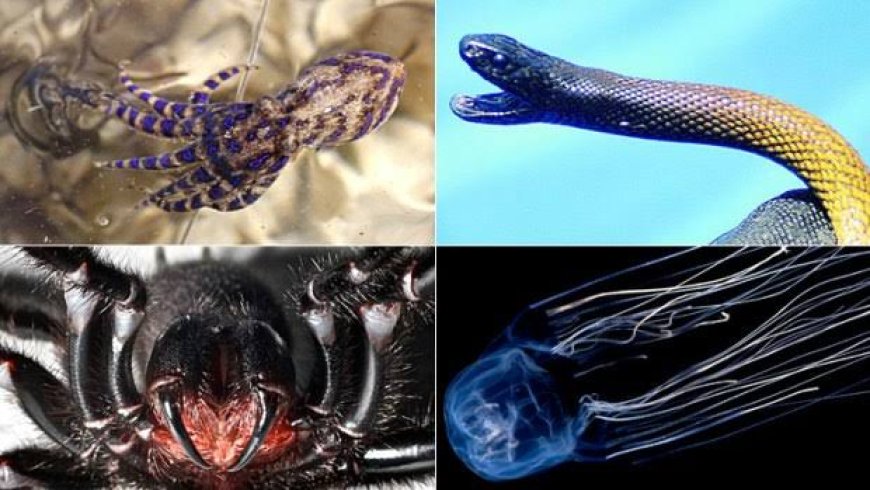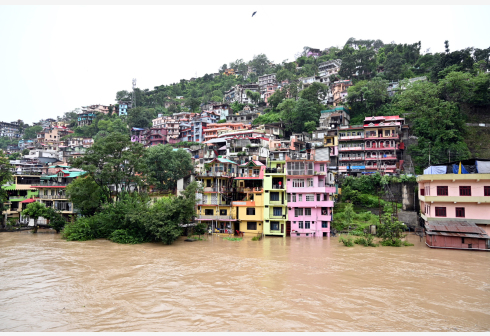Australia : Home to the world's deadliest creatures

Tuesday, 14 January, 2025
McCreadie Andias
Australia, renowned for its breathtaking landscapes, pristine beaches, and unique biodiversity, holds a more sinister reputation as the home of the world’s deadliest creatures.
From the arid outback to the ocean’s depths and the forests’ shadows, Australia teems with predators and venomous beings unmatched anywhere else on Earth.
But why does this sunburned country harbor so many dangerous creatures? Let’s journey through the land, sea, and forest to uncover the evolutionary marvels and inherent dangers of Australia’s lethal inhabitants.
The Most Dangerous Land Predator: The Inland Taipan
Dubbed the "fierce snake," the inland taipan holds the crown for the most venomous snake in the world. Found in the remote deserts of central Australia, this unassuming serpent’s venom is a cocktail of neurotoxins, hemotoxins, and myotoxins, capable of killing 100 adult humans in a single bite.
Yet, despite its lethality, the inland taipan is remarkably shy and rarely encountered by humans. Evolution granted this snake its potent venom as a necessity for subduing agile prey like small mammals in a harsh, resource-scarce environment.
The Deadliest Sea Creature: Box Jellyfish
Lurking in the crystal-clear waters of northern Australia, the box jellyfish is a near-invisible terror. With tentacles stretching up to three meters, this creature delivers venom that attacks the heart, nervous system, and skin cells.
A sting can cause excruciating pain, cardiac arrest, or even death within minutes. What makes the box jellyfish particularly dangerous is its speed and stealth. Unlike other jellyfish, it can actively swim rather than drift, making it an agile and unpredictable predator.
A Common Threat in Urban Spaces: The Redback Spider
The redback spider, a relative of the infamous black widow, thrives in Australia’s urban areas, often found in sheds, mailboxes, and under furniture. Its venom contains a neurotoxin that causes severe pain, nausea, and sweating.
While antivenoms have reduced fatalities, encounters remain frequent due to the spider’s adaptability to human habitats. Its survival is a testament to Australia’s evolutionary pressures, where creatures must adapt to thrive in both wild and urban environments.
The Marine Nightmare: Stonefish
Camouflaged perfectly against the ocean floor, the stonefish is another testament to Australia’s arsenal of deadly creatures. Its venomous spines deliver a toxin so painful that it’s been likened to being struck by a sledgehammer.
What makes the stonefish particularly dangerous is its ability to survive out of water for hours, increasing the chances of human encounters on beaches and tidal zones.
Australia’s Unique Evolutionary Path
Australia’s isolation for millions of years has allowed its flora and fauna to evolve in ways unseen elsewhere. The lack of large land predators like lions or tigers gave rise to smaller, highly specialized creatures that relied on venom, speed, and camouflage for survival.
The harsh environment also played a crucial role: arid deserts, tropical waters, and dense forests forced animals to adapt in extraordinary ways to secure food and defend themselves.
Why Australia’s Creatures Are So Dangerous
Geographic Isolation: Australia broke away from the supercontinent Gondwana over 180 million years ago. This isolation allowed unique evolutionary paths, where venomous creatures thrived as both predators and defenders.
Harsh Climates: From the searing outback to the tropical north, creatures adapted to survive extreme conditions, leading to potent toxins and efficient predatory strategies.
Biodiversity: With over 80% of its species found nowhere else on Earth, Australia boasts ecosystems filled with animals evolved for survival in highly competitive environments.
Despite the fearsome reputation of its wildlife, Australia has relatively few fatalities from animal encounters, thanks to robust public awareness, access to antivenoms, and swift emergency responses. Australians have learned to coexist with their lethal neighbors, respecting nature’s power while embracing its beauty.
What's Your Reaction?


































































































































































































































































































